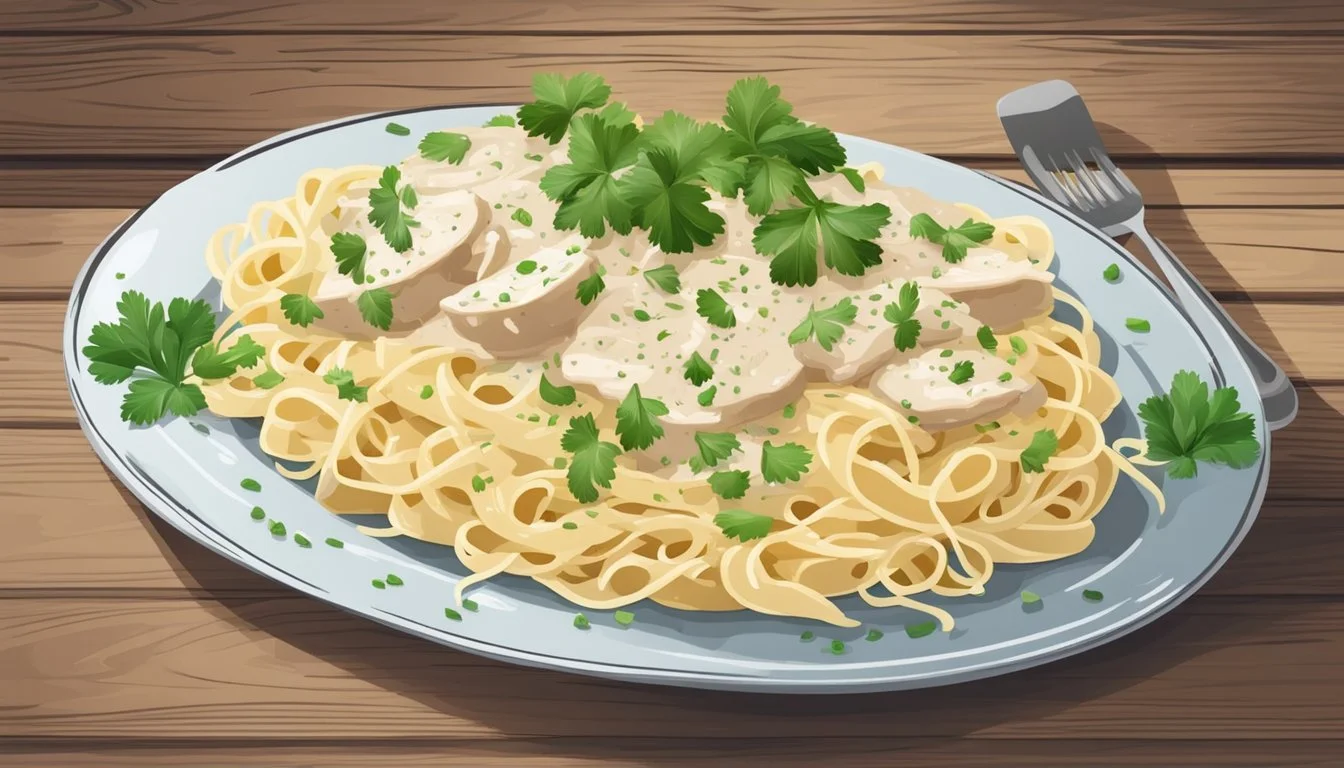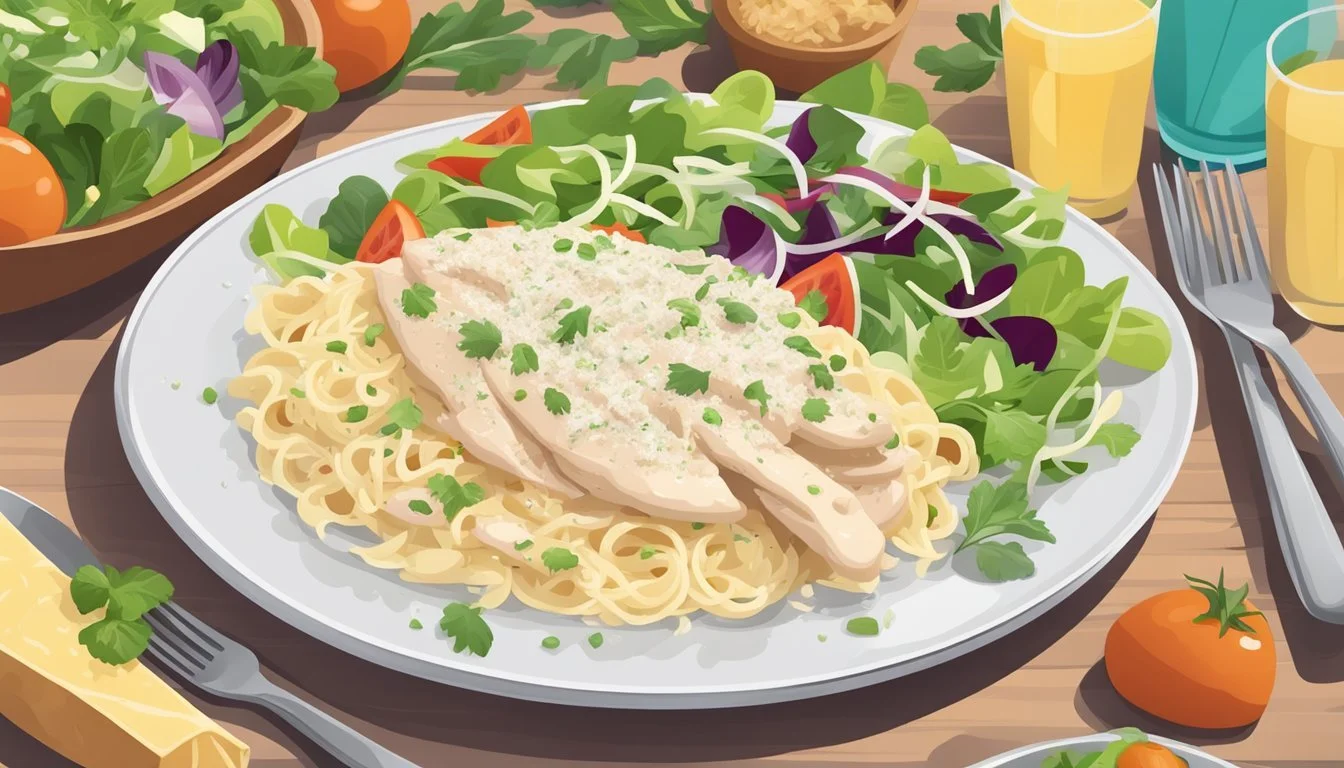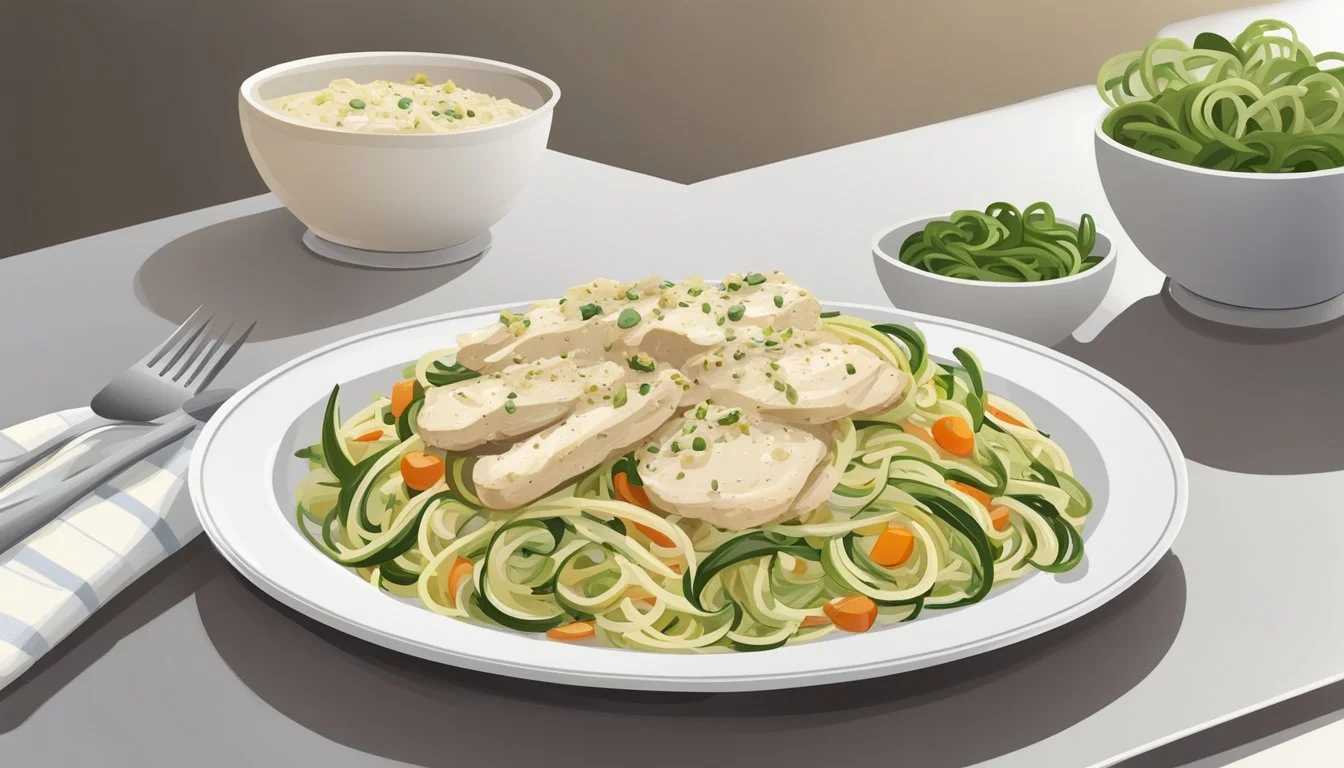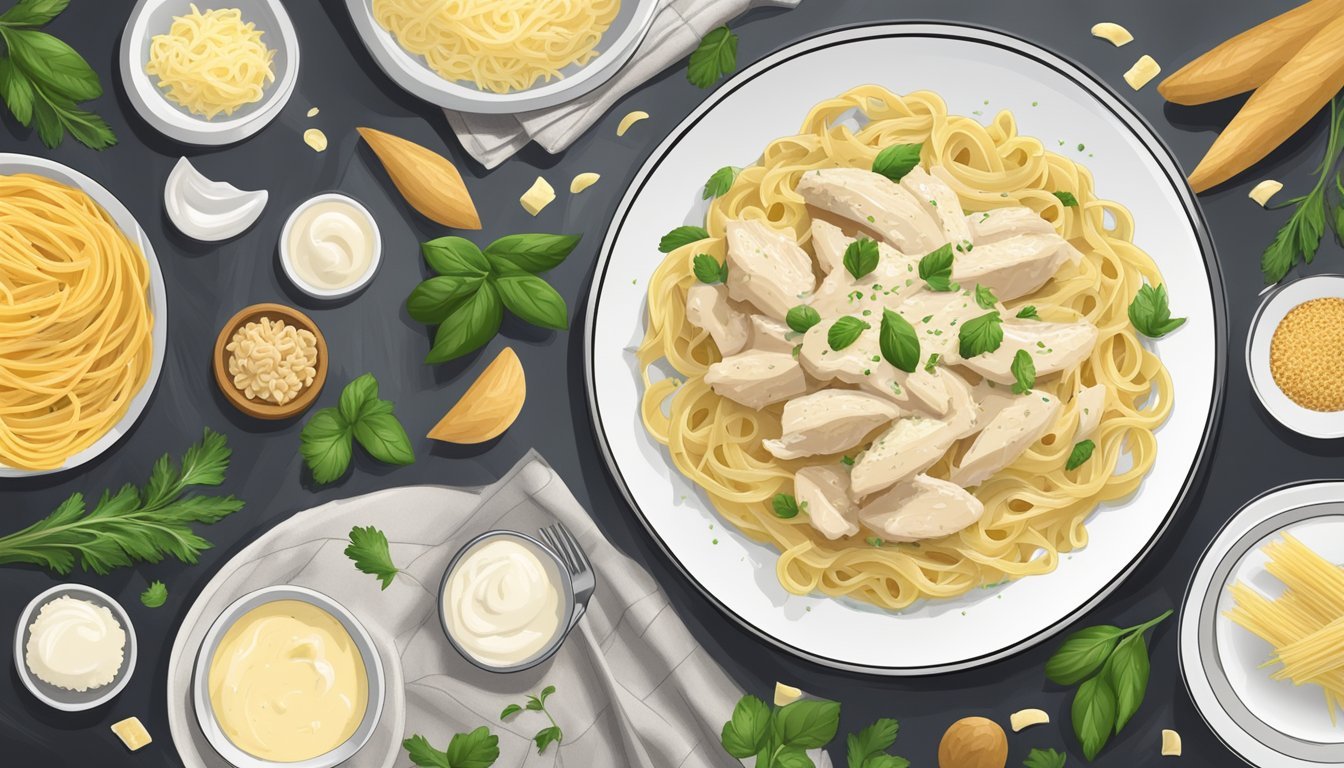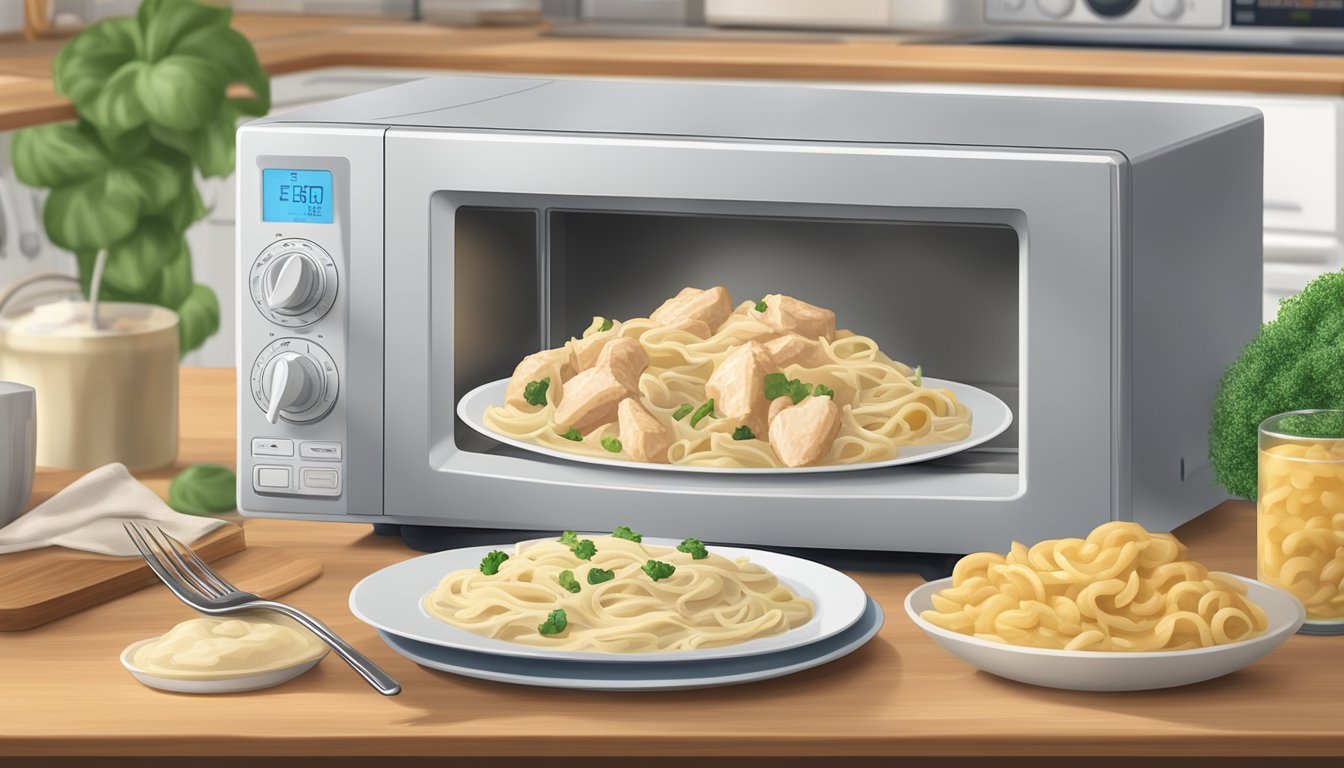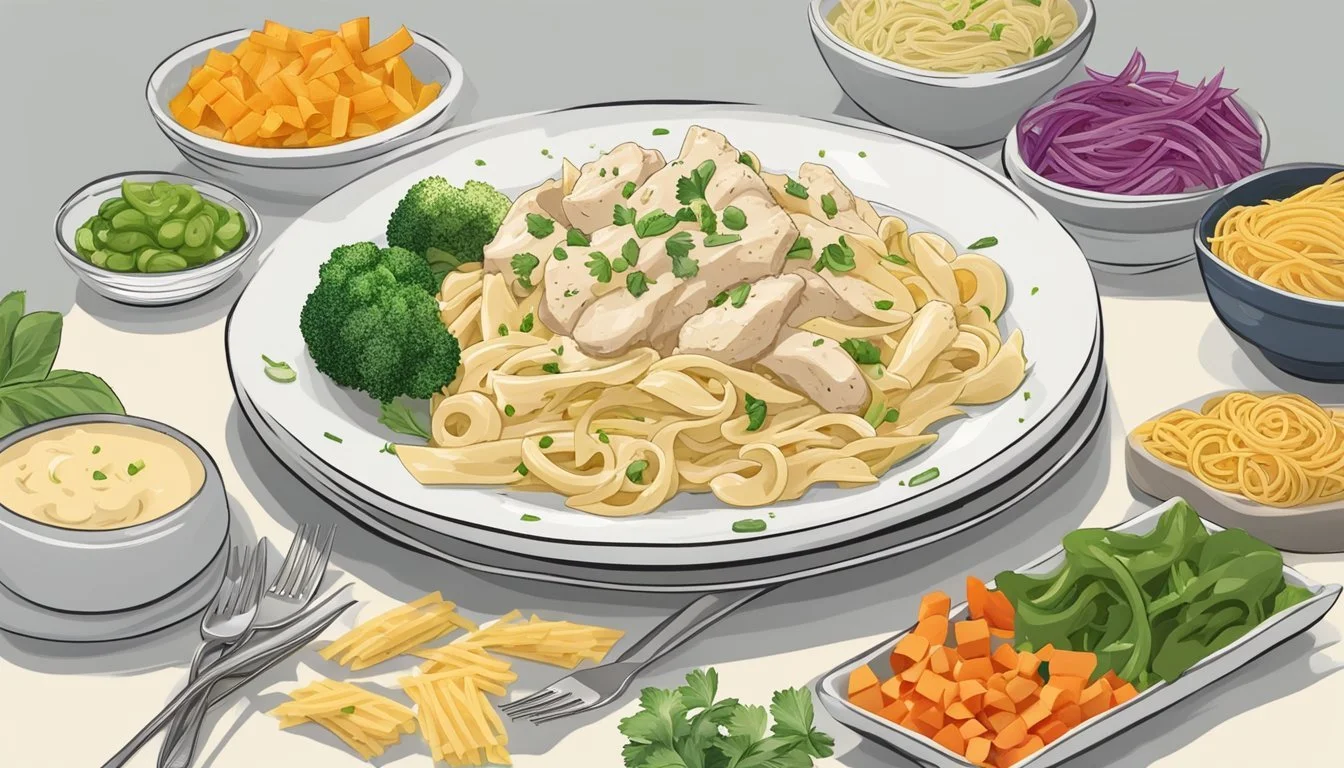Is Chicken Alfredo Gluten-Free?
Unveiling the Truth About This Classic Dish
Chicken Alfredo (What wine goes well with chicken alfredo?) is a popular Italian-American dish known for its creamy sauce and comforting flavors. The classic Chicken Alfredo recipe typically includes pasta (What wine goes well with pasta?), which is cooked and then tossed with a rich sauce made from butter, heavy cream, and Parmesan cheese, topped with slices of grilled or pan-seared chicken. While the sauce itself often doesn't contain gluten, traditional pasta is made from wheat, which is not suitable for those following a gluten-free diet.
For individuals with celiac disease or gluten sensitivity, consuming gluten can cause serious health issues. Hence, the question of whether Chicken Alfredo can be gluten-free is particularly important. The good news is that a gluten-free Chicken Alfredo variant is achievable by substituting traditional pasta with gluten-free alternatives such as those made from rice, corn, quinoa, or other gluten-free grains. It is essential to also ensure that all other ingredients, including the cheese and any added spices or flavorings, are free from gluten.
When dining out or purchasing pre-made Alfredo sauces, it's important to be aware that recipes can vary. Some sauces may use thickeners or additives that contain gluten. Therefore, it is crucial for those avoiding gluten to check labels carefully or consult with restaurant staff to confirm that the dish meets gluten-free standards. With increased awareness and the availability of gluten-free products, enjoying a plate of Chicken Alfredo without the gluten is more accessible than ever.
Understanding Gluten
Gluten is a family of proteins found in grains like wheat, barley, and rye. The two main proteins in gluten are gliadin and glutenin, with gliadin being responsible for most of the negative health effects. When flour mixes with water, these proteins form a sticky network that has a glue-like consistency, giving dough its elasticity and bread the ability to rise when baked.
For many people, consuming gluten is harmless; however, for individuals with celiac disease or gluten sensitivity, ingestion can lead to various health issues. Celiac disease is an autoimmune disorder where gluten can cause damage to the small intestine. Gluten sensitivity, while less severe, also includes symptoms such as bloating, gas, and abdominal pain.
Gluten-Free diets avoid all products containing these grains. A gluten-free diet is essential for managing symptoms and complications of celiac disease and other medical conditions associated with gluten. There is a range of gluten-free substitutes for popular foods, allowing individuals to enjoy products like pizza, pasta, and bread without the gluten.
Producers often label foods as "gluten-free," indicating they comply with the legal standard which typically means containing less than 20 parts per million (ppm) of gluten. Consumers should look for certification on the packaging to ensure the safety of these products. When in doubt, it is important for consumers to consult ingredient lists and manufacturing statements or contact the manufacturer directly to verify that a product is gluten-free.
Components of Chicken Alfredo
Chicken Alfredo is a sumptuous dish that requires specific ingredients to achieve its characteristic taste and texture. Each component, from the sauce to the pasta and chicken, plays a vital role in creating this classic Italian-inspired dish.
Alfredo Sauce
The sauce is the heart of Chicken Alfredo, typically consisting of butter, heavy cream, and Parmesan cheese. For added flavor, chefs often incorporate garlic into the mixture. Authentic Alfredo sauce does not traditionally include egg, though some variations may. It's crucial to stir the sauce consistently while cooking to ensure a smooth consistency.
Pasta Varieties
Fettuccine is the classic choice for Chicken Alfredo, favored for its wide, flat noodles that hold the sauce well. Alternatives like penne are also popular, offering a different texture and appearance while still delivering the creamy sauce in each bite.
Chicken Choices
Chicken breast is typically sliced or cubed and then sautéed in olive oil or cooked separately and added to the dish. The focus is on thoroughly cooked and tender meat, which can also come from options like chicken thighs (What wine goes well with chicken thighs?) or pre-cooked rotisserie chicken for convenience without sacrificing flavor.
Additional Ingredients
Additional ingredients enhance the dish's depth and include options like parsley for a fresh garnish and garlic to infuse the chicken with more flavor. Cooks might also use various seasonings, such as Italian seasoning, to complement the main components.
Gluten-Free Alternatives
When preparing Gluten-Free Chicken Alfredo, it's crucial to select the right pasta type and use gluten-free thickening agents for the Alfredo sauce to ensure the dish remains safe for those with gluten sensitivities.
Gluten-Free Pasta Types
Traditional Fettuccine Alfredo uses wheat-based pasta, which is not suitable for a gluten-free diet. Thankfully, numerous gluten-free pasta alternatives made from the following ingredients are available:
Rice: A common substitute, often found in both white and brown rice varieties.
Corn: This option provides a similar color and texture to traditional pastas.
Quinoa: Rich in protein, this grain offers a nutritious pasta base.
Legumes: Pasta made from beans, lentils, or chickpeas are an excellent choice for added protein and fiber.
To prepare Gluten-Free Chicken Alfredo, one can simply replace regular fettuccine with any of the above gluten-free pasta options, following the cooking instructions specific to each type.
Thickening Agents for Alfredo Sauce
Alfredo sauce typically contains cream, butter, and cheese, which are naturally gluten-free. However, some recipes add flour as a thickening agent. To maintain a gluten-free profile, the following alternatives can be utilized:
Cornstarch: A reliable gluten-free thickener that creates a smooth consistency. It should be mixed with cold water before adding to the sauce to avoid clumps.
Arrowroot: This starch offers a glossy finish and freezes well if needed.
Rice Flour: A fine powder that can act as a substitute for wheat flour in sauce recipes without altering the flavor.
To achieve the desired thickness in Gluten-Free Alfredo Sauce, start with small amounts of these thickeners and increase as necessary, stirring constantly to maintain a creamy texture.
Preparing Gluten-Free Chicken Alfredo
When preparing Gluten-Free Chicken Alfredo, one must use gluten-free alternatives for pasta and thickeners and employ specific techniques in the cooking process to avoid gluten contamination.
Cooking Techniques
The cook starts by heating oil in a skillet over medium heat and cooks the chicken until it's thoroughly done. This typically takes about 7 to 10 minutes, ensuring the chicken is turned frequently for even cooking. Once cooked, they transfer the chicken to a separate plate and retain the skillet for further use to imbue the sauce with the flavors of the chicken.
In a separate pot, gluten-free pasta is boiled until al dente. The proper way to prevent sticking is to add 1-2 teaspoons of cooking oil to the boiling water. After cooking, it's essential to drain the pasta in a strainer and to rinse it under cold water to stop the cooking process.
Recipe Modifications
To modify the Alfredo sauce for a gluten-free diet, the cook replaces traditional flour with cornstarch or another gluten-free starch to thicken the sauce. They combine cream, broth, and gluten-free seasonings in the skillet previously used for the chicken, whisking the ingredients until they meld into a smooth sauce. It's important to heat this mixture over low heat while stirring continuously to avoid lumps and scorching.
If the sauce happens to thicken too much, the cook can gradually stir in more milk until the desired consistency is achieved. To finish, the pasta and cooked chicken are reintegrated into the skillet with the sauce, ensuring that each element is well-coated and heated through before serving.
Nutritional Insights
When assessing the nutritional content of Chicken Alfredo, it's essential to consider the various ingredients typically found in this dish. Chicken Alfredo is not inherently gluten-free because traditional Alfredo sauce is served over pasta that contains wheat. However, when made with gluten-free pasta, it can be a suitable option for those on a gluten-free diet.
Calories: A typical serving of Chicken Alfredo can be high in calories, mainly due to the full-fat dairy ingredients, such as butter and heavy cream, and the presence of cheese.
Dietary Considerations:
Gluten: Opt for gluten-free pasta and ensure all other ingredients, such as any added seasonings, are gluten-free.
Dairy: Traditional Alfredo sauce contains dairy; cheese and butter are fundamental components providing rich flavor and texture.
Full-Fat Ingredients: The use of full-fat dairy products contributes to a creamy and satisfying sauce but increases the calorie and fat content of the dish. For those watching their intake, lower-fat dairy alternatives can be considered, though this may alter the texture and taste.
The nutritional content will vary based on the specific recipe and portion size. Here is a general breakdown:
Nutrient Approximate Amount per Serving Calories 600-1500 kcal Fat 20-75g Carbohydrates 50-100g Protein 30-50g
The dish provides a good source of protein from the chicken, which is beneficial for muscle repair and growth. Additionally, chefs can enhance the nutritional profile by incorporating vegetables or using a leaner cut of chicken and adjusting the type and amount of dairy used.
Serving Suggestions
When it comes to serving Chicken Alfredo, especially one that's gluten-free, thoughtful accompaniments and careful presentation can elevate this comfort food to a memorable family dinner.
Accompaniments
Vegetables: Steamed broccoli or sautéed mushrooms make excellent sides that complement the creamy texture of the Alfredo sauce. They can be seasoned with garlic for added flavor.
Greens: A fresh salad with baby spinach, adorned with slivers of fresh basil, provides a refreshing contrast to the rich pasta dish.
Bread: For those not restricted by gluten, a slice of garlic bread is traditional. However, a selection of gluten-free garlic bread should be offered to maintain a cohesive gluten-free meal.
Presentation Tips
Pasta: Gently toss the gluten-free pasta in Alfredo sauce ensuring each strand is well-coated. This makes for a visually appealing and evenly flavored dish.
Garnishing: Sprinkle dishes with a touch of fresh herbs like basil or parsley. This adds a pop of color and a fresh taste that cuts through the richness.
Plating: Serve in warm, shallow bowls to showcase the creamy texture of the sauce. This also makes it easier for guests to enjoy every delicious bite.
Storage and Reheating
When it comes to preserving the quality of Chicken Alfredo, proper storage and reheating techniques are crucial. This section provides specific methods to ensure that leftovers maintain their taste and texture whether they're stored in the refrigerator or freezer.
Storing Leftovers
Leftover Chicken Alfredo should be stored in an airtight container and refrigerated within two hours of cooking to maintain its safety and quality. This dish is best consumed within 3-4 days when kept in the refrigerator at or below 40°F (4°C). It's important not to leave Chicken Alfredo at room temperature for a prolonged period to minimize the risk of bacterial growth.
Freezing Guidelines
For longer-term storage, Chicken Alfredo can be frozen. To freeze, one should:
Cool the Chicken Alfredo completely to avoid raising the freezer's temperature.
Portion the leftovers into manageable servings, as this will make it more convenient to reheat only what is needed.
Transfer the portions into freezer-safe bags or containers. Be sure to label them with the date to keep track of how long they've been stored.
Freeze promptly at 0°F (-18°C) or lower. Properly stored, Chicken Alfredo can be kept frozen for up to 2 months for optimal taste and quality. However, it remains safe beyond this time frame.
To reheat, it is recommended to first thaw the Chicken Alfredo in the refrigerator overnight. Once thawed, whether it was refrigerated or frozen, Chicken Alfredo can be reheated in the oven to ensure even warming. A covered oven-safe dish should be placed in a preheated oven at 350°F (175°C) for about 15-20 minutes. It's advisable to stir the dish halfway through the reheating process to ensure even heat distribution. Always check that the internal temperature has reached 165°F (74°C) before consuming.
Adapting for Dietary Restrictions
Adapting Chicken Alfredo to meet various dietary requirements involves substituting or omitting ingredients that contain gluten and other allergens. Those with gluten sensitivity or celiac disease can enjoy Chicken Alfredo by using gluten-free pasta and ensuring all other ingredients are gluten-free certified.
Gluten-Free Options:
Pasta: Opt for gluten-free fettuccine or spaghetti made from rice, corn, or a blend of gluten-free grains.
Thickening agents: Replace traditional flour with gluten-free alternatives such as cornstarch or a gluten-free flour blend.
Dairy-Free Options:
Milk/Cream: Substitute dairy milk with lactose-free or plant-based milks like almond, soy, or coconut milk.
Cheese: Use dairy-free cheese substitutes that melt well, or nutritional yeast for a cheesy flavor.
Vegetarian Variations:
Protein: Instead of chicken, incorporate plant-based protein sources such as tofu, tempeh, or seitan. (What wine goes well with seitan?)
Stock: Use vegetable stock in place of chicken stock to maintain a rich flavor.
To maintain authenticity in taste and texture, individuals must carefully select substitutes that closely mimic the properties of the original ingredients. It is important to read labels for hidden gluten and allergens. With attention to detail and high-quality substitutes, those with dietary restrictions can enjoy a satisfying plate of Chicken Alfredo without compromising on taste or their health.
Enhancing the Flavor
The allure of Chicken Alfredo lies in its rich and creamy sauce, complemented by the savory tenderness of chicken. Herbs are instrumental in infusing depth into the dish. Fresh parsley, as an example, lends a vibrant color and a fresh, slightly peppery taste. For a hint of Italian flair, one should consider adding a sprinkle of Italian seasoning—a dynamic blend often consisting of basil, oregano, rosemary, and thyme.
Garlic plays a pivotal role in flavor enhancement, offering a pungent and spicy essence that mellows as it cooks. For a more subtle and even distribution, one can introduce garlic salt, which combines the sharpness of garlic with the crystal-clear simplicity of salt.
Incorporating sea salt into the dish is another way to enhance flavors. Unlike refined table salt, sea salt could include additional minerals and tastes slightly less salty, which means it can season the dish without overpowering it.
The gentle warmth of black pepper adds a final, nuanced touch that complements the creamy sauce and can elevate the overall taste profile when used judiciously.
Lastly, the addition of a pinch of nutmeg is a chef's secret to adding a layer of complexity to the sauce. It pairs exceptionally well with dairy-based sauces, such as the Alfredo, providing an aromatic sweetness that is unmistakable yet subtle.
Flavor Enhancers Suggested Use Herbs Fresh parsley or Italian seasoning to taste Garlic Salt Sparingly, to season chicken and sauce Black Pepper Freshly ground over the top for a peppery hit Sea Salt To taste, preferably over regular table salt Nutmeg A pinch to enrich the creamy Alfredo sauce
Through careful selection and application of herbs and spices, one can dramatically elevate the taste of Chicken Alfredo, ensuring a gluten-free version that is as delectable as its traditional counterpart.
Exploring Related Dishes
While Chicken Alfredo may not inherently be gluten-free due to traditional pasta, there are numerous related dishes within the realm of pasta recipes that can cater to gluten-free diets.
Pasta Recipes Beyond Alfredo
One can explore a variety of gluten-free pasta dishes. Gluten-Free Mac and Cheese is a classic alternative, utilizing corn or rice-based pasta and a blend of gluten-free cheeses and milk. Another staple is Gluten-Free Lasagna, which employs layers of gluten-free lasagna noodles, ricotta cheese, marinara sauce, and ground meat or vegetables.
For those who enjoy hearty meals, a Gluten-Free Chicken Pasta Bake offers a satisfying experience. It merges the concept of baked pasta with tender chunks of chicken, smothered in a gluten-free béchamel or tomato-based sauce, and finished with a golden cheese topping.
Creative Twists on Chicken Pasta
Incorporating chicken into gluten-free pasta dishes allows for creative culinary adventures. One can consider making a Chicken Pasta Salad with a medley of fresh vegetables, gluten-free pasta spirals, and a light dressing. Alternatively, crafting a Chicken Pesto Pasta with gluten-free penne, homemade pesto sauce, and juicy chicken strips is an excellent way to keep the dish fresh and flavorful.

